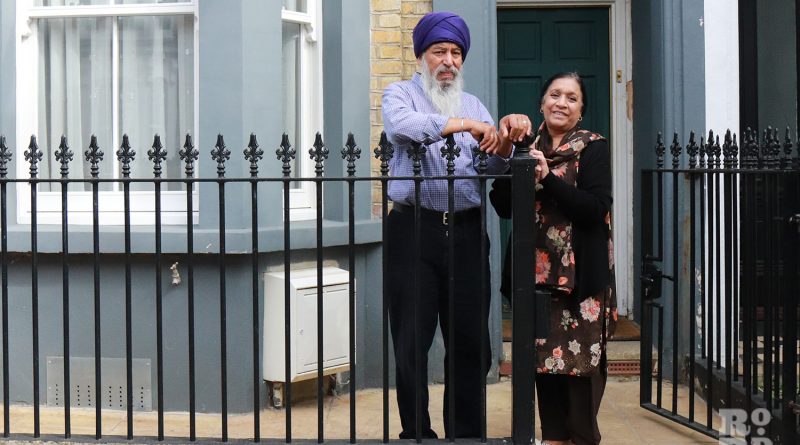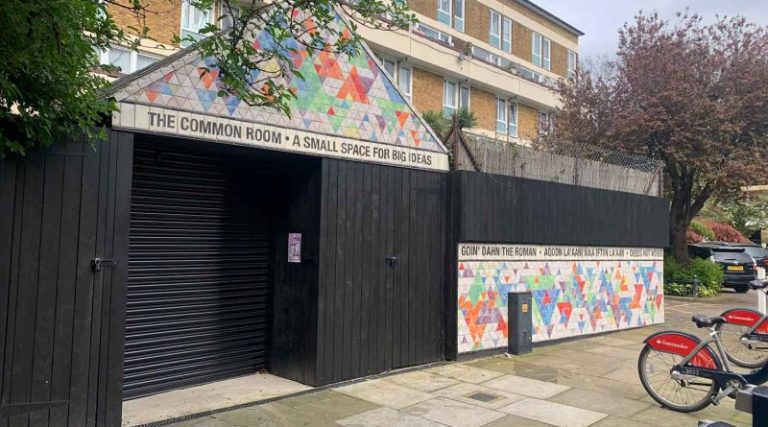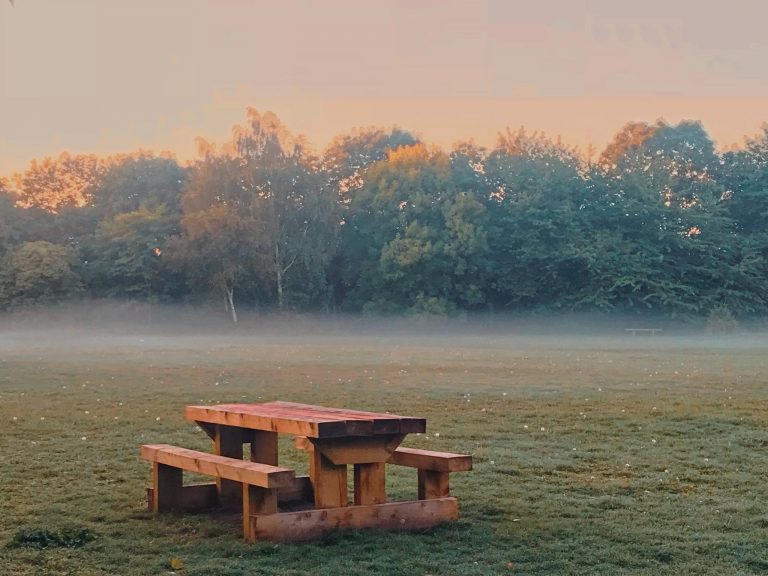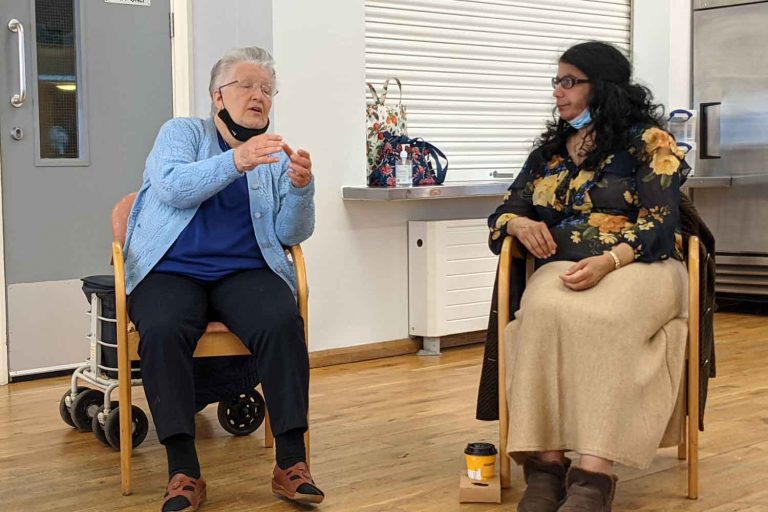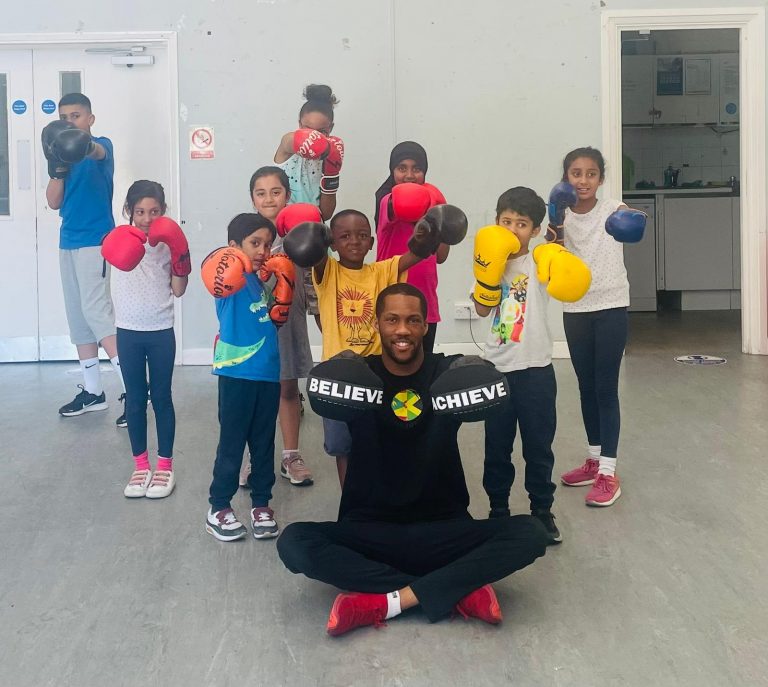This is Home: Jagmohan and Shinder Bhakar, Sikhs in Bow
Bow Sikh couple Jagmohan and Shinder Bhakar speak about blending Western clothing with their own, viewing their neighbours as an extension of family, and why equality for all can start by sitting on the floor together.
Jagmohan Bhakar, 67, and his wife Shinder live in one of the Victorian terraced houses just off Roman Road in Bow. Bhakar came to Bow from Ambala in northern India in 1967 after his dad moved over and settled in the area. He came with his mother, brother and sister.
Shinder was born in Edinburgh in the mid-1950s and moved to Bow after she and Jagmohan married in 1976. Theirs was an arranged marriage, something which the Bhakars decided not to do with their own children.
Arriving at their front door, you are greeted by strings of ornamental dried leaves, interspersed with baby rattles and small soft toys, signalling the birth of a new grandchild. Jagmohan explains that it is a ‘sign of happiness in the home’. As is customary in India, shoes are taken off as soon as you enter. Shinder’s bare feet, with dark blue painted toenails, have walked the wooden floorboards for almost a quarter of a century. Her sari is black with large soft pink roses; the floral dress contrasts with Jagmohan’s more English blue checked shirt and matching blue turban.
Everyone who comes to their home is welcome with homemade sweet and aromatic masala chai that Shinder makes from scratch using spices she grounds down. To accompany the tea, snacks are provided; bowls of Bombay mix are served alongside plates of McVitie’s Digestive biscuits.
The couple’s natural ease reveals their close marriage of over five decades. Shinder’s melodic Scottish lilt complements Jagmohan’s quieter, more reflective demeanour, his face giving little away until, upon a quip or joke, he breaks into the widest full-faced smile.
They are both largely retired and spend their time attending the Gurdwara Sikh Sangat on Campbell Road. Jagmohan volunteers for the Bow Food Bank and recently ran the Hackney half marathon to raise money for charity. Shinder is less mobile nowadays but spends her time helping look after her extended family.
What does family mean to you?
In keeping with their culture, Shinder moved into Jagmohan’s family home when they married. Four daughters and one son were born and brought up in Bow. The children went to Olga Primary School. The family of seven continued to live with Jogmohan’s parents and his brother just two doors from where they live now.
The Bhakars bought their current house 25 years ago with the plan to create their own family home. Their children, however, loved living with their grandparents so much that the family didn’t move into their new home until three years later.
Family is central to their lives. Jagmohan’s parents’ and grandparents’ photos are on display on the front room’s mantle piece. Placing them in a focal point in their home demonstrates the deep respect afforded to elders in the Sikh community, a practice the Bhakars are eager to instil in their children and grandchildren.
One of their daughters lives next door, and Shinder and Jagmohan knocked down the fence in the front and back garden to create a larger space for them to enjoy as a family.
How do you celebrate your identity and culture?
J: We live in the same way as we would do in India, but also respect the culture or the environment within the locality we live in.
We try to pray five times a day. The prayers include the first prayer in the morning, Japuji, the evening prayer of thanksgiving, Rehras, and also Sohila, a nighttime prayer. We do these, but only if we remember! We recite Sohila when cremating those who have passed away. It signals the end.
S: We encourage our children and grandchildren to come and pay their respects to their grandparents and great-grandparents. It’s the first thing they do when they arrive; just a nod and a small prayer to the photos in the living room. When the grandparents were alive, the children would have touched their grandparents’ feet. I teach my grandchildren who might not know or understand now or think it’s not necessary, but it is. You’re not lower than anybody, it’s about respect, and for the children to understand that and teach the next generation. If they didn’t, there would be nothing left.
The Bhakars celebrate Diwali as well as Christmas, but Diwali is one of their main winter festivals. The Bhakars’ children and grandchildren all gather in their home. Shinder will light candles around the house and everyone will dress up, putting on their sparkliest clothes. Presents are handed out and everyone participates in a Diwali version of Secret Santa.
What meal or food do you especially associate with home?
J: At the Gurdwara, Parshad is made. It’s like a sweet pudding, a semolina pudding, and made every time you go there. That is to welcome everybody and to be shared between everybody.
S: After the prayers are done, it is given out by the Gurdwara’s leaders. You take a ball of it in your hand, and you sit on the floor, or a chair if you can’t sit on the floor, but otherwise, we all sit on the floor to show that everyone is equal.
We mostly do home cooking though and don’t eat out really other than for fish and chips. The best chips are from where I grew up in Leith, in Edinburgh! But we eat at home mainly and I buy most of my spices for cooking or tea in the Pakistani shop opposite to The Albert pub. They sell brown and green cardamom which I grind down and brew for a homemade masala chai.
What’s your favourite item of clothing and why?
S: I’ve always worn the more traditional clothing; salvar, kamees and dupatta [salvars are trousers and it is worn beneath the kamees, a dress top. These are worn with a dupatta which is a scarf.
You have to wear the three. You can’t go out without your scarf because you’re supposed to cover your head. We still do cover our heads in front of our elders. And to cover your head, done properly, the shawl must be taken out across, properly, over your shoulders. And that’s the way we’ve done it. Now, times have changed.
We’ve all started wearing Westernised clothing, even our children. They’ve been born here, grown up here, but that’s why we wear our own traditional clothes. I make sure that if it’s a granddaughter’s birthday, I’ll give her a present but also some material and tell her I’ll get it made up for her so she can wear it sometime. So, it doesn’t make me sad about the change because we do wear our own traditional clothes as well.
But times are changing so it’s harder… you have to make sure your own religion and your culture is out there. But the younger generations know about it and they respect it and they still will keep it up but you have to, sort of, give them a little nudge, push them in.
And sometimes I’ll go out with trousers on and a long top but always with a scarf, but not put it over my head. It is to cover yourself out of respect.
What is the best way to bridge cultural divides between people?
J: I think it is a lot better now. I don’t think it is anything like it was at the time when I first came to the East End and Enoch Powell made the ‘Rivers of Blood’ speech just after I arrived. A lot of the Sikh community left the East End, some to Romford, or further to Colchester, depending on how deep their pockets were! But we stayed in Bow.
But now, people are more understanding and accept each other. We have a close-knit neighbourhood. All of the neighbourhood, we know quite a lot of them; they are basically part of the wider family. So, we are there for them and I’m sure they are for us.
S: I hope so! But they are there for us. I go to the Zacchaeus Church [Zacchaeus Project is a community project based at the Methodist Church on Approach Road]. A lot of people go there and that’s one way of getting to know different people, different cultures. It’s a nice little group. There’s crocheting, there’s painting, and lunches. You just meet and mix with different people.
What does the East End mean to you?
J: The East End means virtually everything to us, you know, because I’ve lived here since my teens. And so, the good and bad times, it’s all been part of my life. We’re friendly and understanding of each other because most of us are working class, so most people understand each other, but also we can have our own differences as well.
S: Our family is here and we have everything we need here; Stratford and the markets. This is our home.
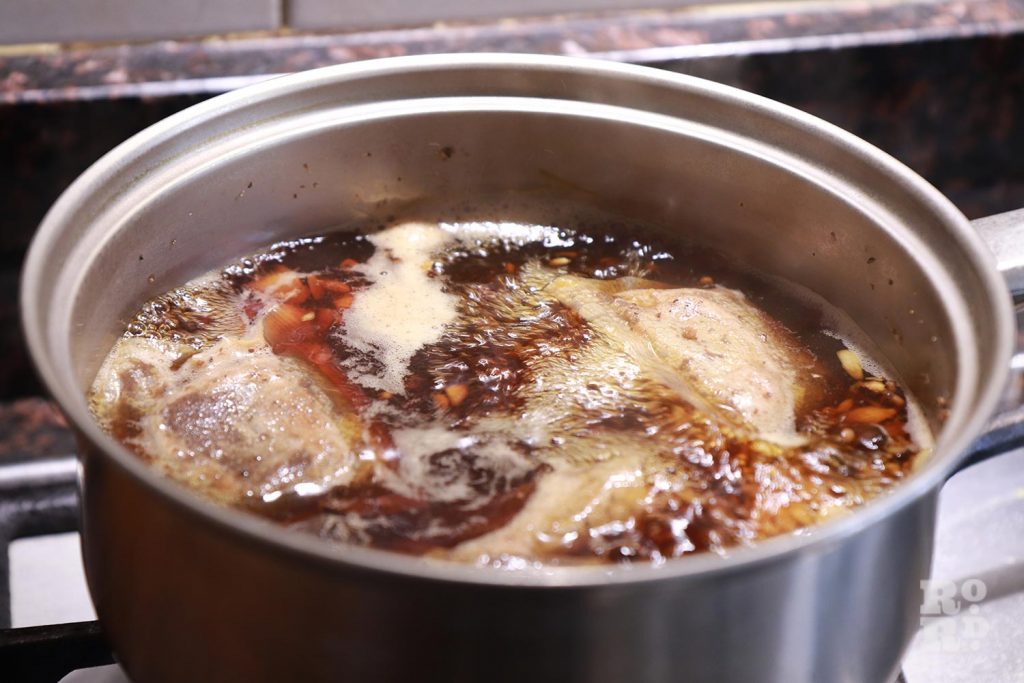
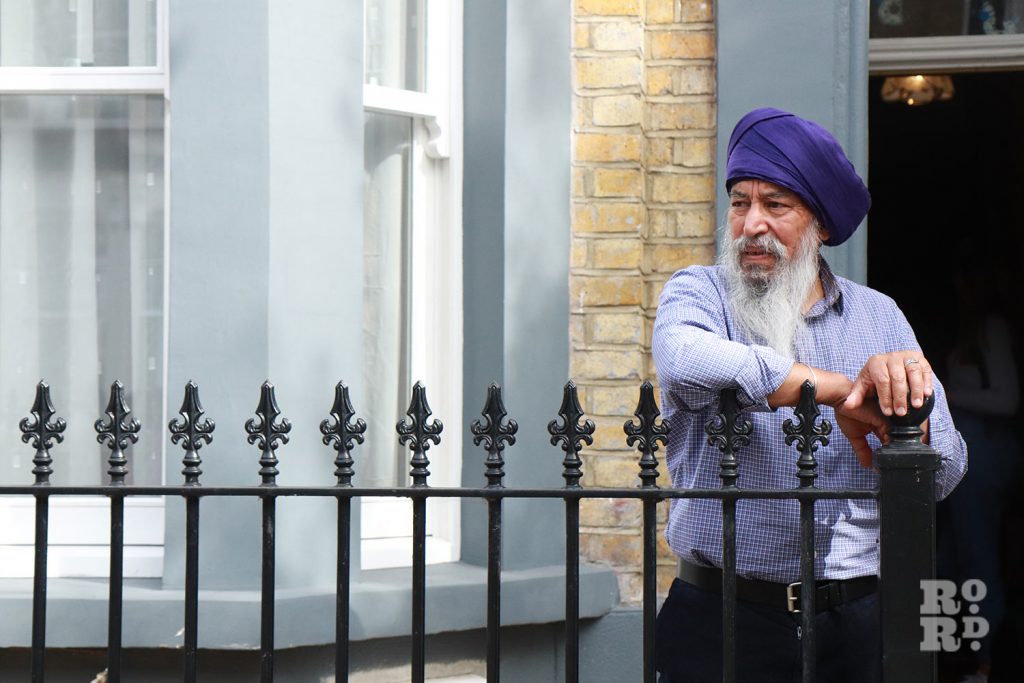
If you enjoyed this article, read our interview with Mongolian Bow teenager, Burte Gerelt-Od.

